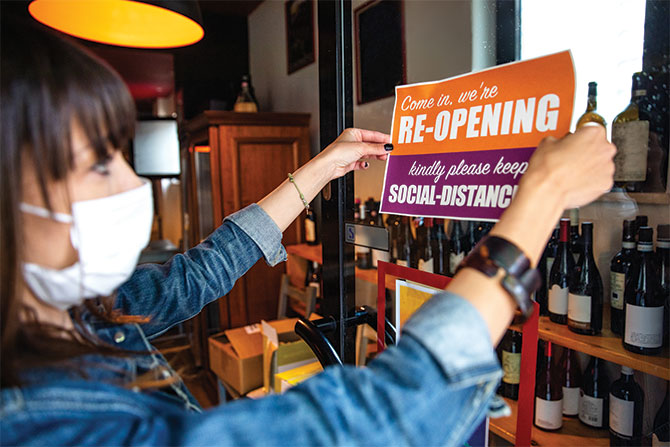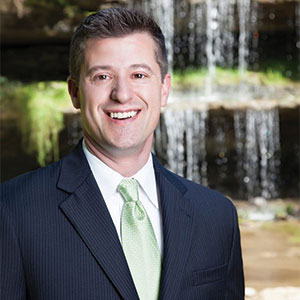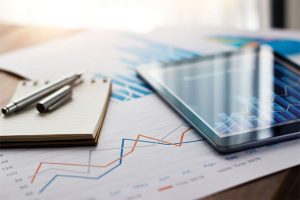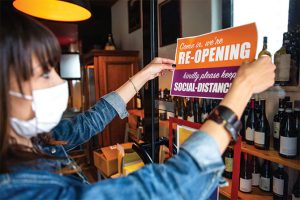By Matthew Kingery, Lewis Glasser, PLLC
According to the U.S. Small Business Administration’s 2018 Small Business Profile Report, U.S. small business accounts for 99% of the businesses in the U.S., and more than 47% of all U.S. employees. Small business has often been referred to as the backbone of the U.S. economy. It is no secret that COVID-19 has resulted in financial distress for many of these small businesses. The first round of the Paycheck Protection Program (“PPP”) was designed to address the financial hardship created by the COVID pandemic and experienced by this hugely significant sector of the economy. Round two of PPP is here with the same goal in mind, but the program has undergone significant changes designed to infuse more deserving small businesses with the cash necessary to continue operations. As the Biden administration takes shape, more changes to COVID relief programs are sure to come. In fact, a new round of stimulus legislation was proposed on his second day in office and started making its way through the legislative process.
The first round of PPP provided short-term financial assistance to small businesses dealing with the impact of the COVID-19 pandemic. The program originated in Congress in March 2020 as part of the Coronavirus Aid, Relief and Economic Security Act (“CARES Act”), and was intended to guarantee eight weeks of payroll and other costs to help those businesses remain viable and allow their workers to pay their bills. The PPP Flexibility Act of 2020 relaxed many PPP loan guidelines. The original deadline to apply for a PPP loan was June 30, 2020, but was extended through Aug. 8, 2020, by legislation signed on July 4, 2020.
As stories came to light of certain companies receiving PPP funding, like Kanye West’s Yeezy clothing brand, Treasury implemented a rules change; it became necessary to demonstrate that firms applying for PPP loans did not have access to alternative streams of capital. Potential criminal liability also led to roughly 30% of businesses that had collected PPP funds to return them. This potential criminal liability also had the secondary effect of causing firms otherwise eligible for funds to back away from the program.
This is not to say that there are not numerous success stories associated with the first round. As many readers of this article can attest, even though the initial round was flawed, PPP was critical to many small businesses and kept the doors open in many of these firms. One study of small business professionals showed that in the spring of 2020, 43.2% of small businesses that received first-round PPP funds felt they would survive over the long haul as a result of receiving those funds. However, this data was gathered before the second surge triggered many business closings.
On Dec. 27, 2020, President Trump signed legislation approving a $900 billion COVID-19 relief package, the Economic Aid to Hard-Hit Small Businesses, Nonprofits and Venues Act (“Act”). In addition to long-awaited stimulus checks for Americans, the Act assists small businesses mainly by revamping the PPP. The second round of PPP made an additional $284.5 billion in economic aid available, with $137 billion set aside for “second-draw” loans for firms that need help beyond their initial loan. The legislation that created the second round of federal funds for small businesses seeks to clean up some of the problems experienced in round one by limiting access to businesses that can demonstrate a hardship.
On Dec. 27, 2020, President Trump signed legislation approving a $900 billion COVID-19 relief package, the Economic Aid to Hard-Hit Small Businesses, Nonprofits and Venues Act (“Act”). In addition to long-awaited stimulus checks for Americans, the Act assists small businesses mainly by revamping the PPP.
The Act changed PPP in three primary ways. First, the Act changes the PPP rules for existing PPP loans, new PPP loans and PPP second draws. These rule changes affect the areas of eligibility, allowable expenses, forgiveness and more. Second, the Act allows new PPP loan applications to be submitted by eligible applicants that never obtained a PPP loan. Third, the Act provides a “PPP second draw” for some businesses that have already received a PPP loan.
The SBA has issued a flurry of guidance implementing the Act. The increased funding and eligibility guidelines have added complexity to the PPP rather than simplifying the process. The forgiveness process has been made easier for businesses that use the majority of the money for payroll and makes the loans tax-free.
Before passage of the Act, borrowers that received an EIDL Advance (advances between $1,000 and $10,000) had that amount subtracted from their total forgiveness. The Act now provides that EIDL Advances will not reduce PPP loan forgiveness. The SBA has indicated that borrowers who have already received forgiveness may amend their forgiveness applications.
Also, Section 501(c)(6) not for profit organizations became eligible for PPP loans for the first time. These businesses are eligible so long as (1) they do not receive more than 15% of their receipts from lobbying activities, (2) lobbying activities do not comprise more than 15% of the organization’s total activities, (3) the cost of lobbying activities did not exceed $1 million during the tax year ending Feb. 15, 2020, and (4) the organization does not employ more than 300 employees.
The Act also provides that borrowers in bankruptcy are eligible to apply for PPP loans. These loans are treated in the borrower’s bankruptcy case as administrative claims and, to the extent not forgiven, must be paid in full in any Chapter 11 cases and are not subject to “cram down.”
When this article was drafted, second-round PPP applications were well underway, but the new Biden administration was just taking shape. Recent news reports make it appear that further COVID stimulus will soon be approved. Financial professionals will be well served to pay attention to news coming from Washington to be prepared to advise their customers as existing programs continue to be modified and new programs are brought to bear.







